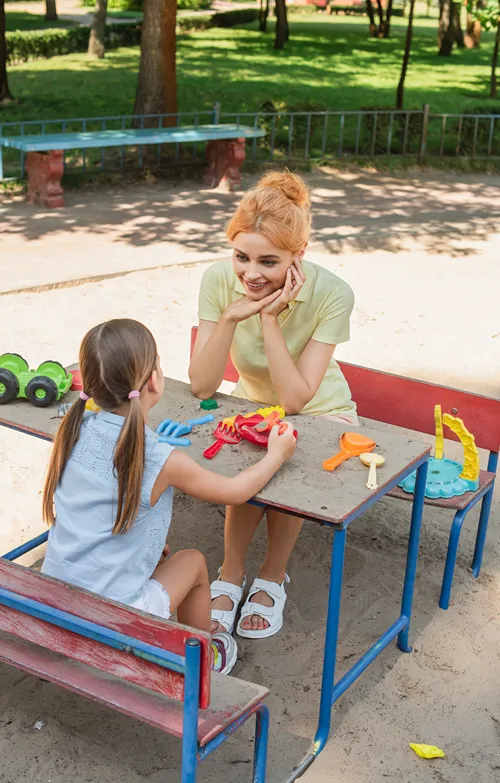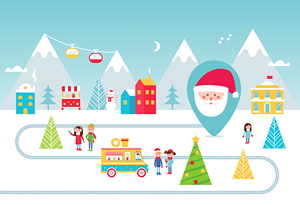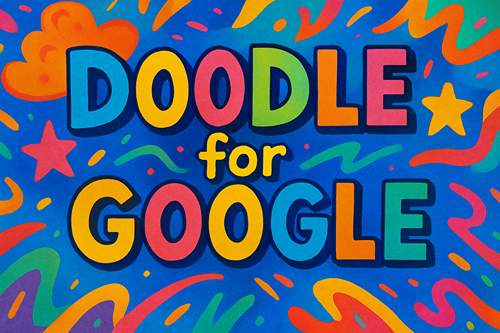How Public Playgrounds Are Evolving to Serve Families, Schools, and Entire Communities
Many people conceptualize public playgrounds in terms of their obvious, surface value: a place for kids to have fun and entertain themselves. However, the social, educational, physical, and other benefits of playgrounds extend far beyond just basic child’s play.
Public playgrounds can be one of the only spaces today’s child gets meaningful exercise or build meaningful friendships. They’re also one of the last remaining third places for adults to gather and meet without paying.
Public playgrounds are also changing and growing to meet the needs of their communities. They’re being built or updated for more accessibility, inclusivity, educational value, and to promote fitness and wellbeing. At the same time, they’re keeping classic elements that delight children and sentimental adults alike. This article will take a closer look at just some of the ways planners and developers are making playgrounds an even better community resource.
Growing Young Minds
Old-school playground structures like swings and slides can keep children entertained for hours. They promote physical activity, group play, critical thinking, and the obvious — they get kids off their phones. These traditional playground elements can also spark kids’ creativity, as they make up their own games and ways to use them. However, there’s room for growth when it comes to playground features that educate even as they entertain.
Modern commercial playground equipment is evolving to include more options that get children’s brains moving instead of just their bodies. For example, musical playground instruments — like bongos and xylophones — get them thinking about rhythm and learning patterns. Spelling and maze panels can teach kids fine motor coordination and deeper problem-solving skills and serve as a well-rounded addition to more free-form activities.
A Space for Everyone
Playgrounds have always been spaces where children, their teachers, caretakers, and families have gathered together in community. However, they haven’t always been welcoming to every person or family in a given community or student population. De facto segregation, inaccessible design features, and other problematic elements haven’t always made playgrounds a space for everyone. Modern playgrounds are evolving to try and solve this problem in a number of ways.
Many playground designers are now thinking about physical accessibility — from accessible playground structures for kids to spaces every adult can use. For example, more playgrounds are being built with accessible ramps for wheelchair users. Designers are also thinking about sensory-friendly structures to support children with varying degrees of neurodivergence. Some playgrounds even incorporate features from different cultures and religions, to promise inclusivity.
Shared Spaces and Third Places
As mentioned above, in countries like the US, the public playground serves as one of the last remaining free third places. That is to say, it’s one of the only areas to meet up, hang out, and loiter without having to pay for anything. Libraries and public squares can also serve this function, but they’re often in short supply in a car- and screen- dominated society. Playgrounds, on the other hand, are unlikely to be taken off the map anytime soon.
In Europe, planners and developers have embraced playground designs that encourage adults to meet and linger socially. It’s common for parents to share a beer and conversation at playtime, and playgrounds have comfortable benches, tables, and nearby cafes and restaurants. (Of course, this works better in cities where parents can walk instead of driving). The US should take inspiration from these designs in order to make playgrounds more inviting third places for all. Places that encourage creative free play for curious young minds.
Outdoor Space and Sustainability
Besides their unique status as one of the last remaining third places, playgrounds are also one of the last remaining public outdoor spaces. Think about it: most Americans spend shockingly little time outside unless it’s in the car or crossing the parking lot. Public playgrounds offer a chance for children and adults to get fresh air, sunshine, and — along with it — some much needed Vitamin D. That can, in turn, contribute to better mental health outcomes and overall well being.
Playgrounds can also be a force for improving the environment, by nature of how and where they’re built. For example, many are now made from recyclable, renewable, local, and other eco-friendly resources, like nearby trees and boulders. However, even if they are built from ordinary materials, playgrounds can still improve the environment. They can be planned strategically to replace other real estate, giving plants and animals room to thrive in urban areas.
A Growing Phenomenon
As parents, educators, and city planners increasingly recognize the importance of great playgrounds, designers are working to make them better. They’re adding more inclusive features and finding ways to make playgrounds inviting and engaging for everyone. Some designers are working on whole playgrounds that feel like interactive art pieces for people of all ages. Others are adding exciting new activities, like climbing walls and parkour courses.
However, there is much more work to be done when it comes to making playgrounds a shared public resource. Nicer, newer playgrounds are not always accessible to all, especially for those who don’t drive or live in lower-income areas. In order to truly evolve, playgrounds need to be more ubiquitous and evenly spaced throughout urban areas. They also need to be accessible by foot, as well as by plenty of convenient, free or affordable public transit options.






